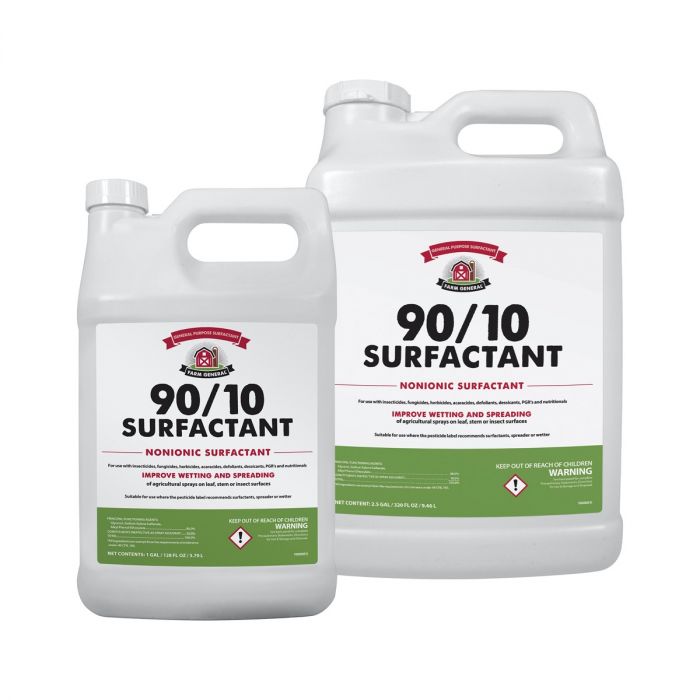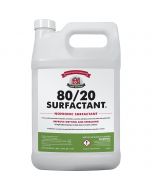90/10 Surfactant
Improve the wetting and spreading of spray solutions on leaf, stem or insect surfaces. The surface-active agents in 90/10 Surfactant are suitable for use wherever a pesticide label recommends a surfactant, spreader or wetter. The general purpose surfactant also contains a defoamer to help suppress the formation of foam in your spray solutions.
Non-ionic surfactant
Where to use:
Use with insecticides, fungicides, herbicides, acaracides, defoliants, dessicants, PGR's and nutritionals
When to use:
- When the pesticide label recommends surfactants, spreader or wetter
- To improve wetting and spreading of agricultural sprays on leaf, stem or insect surfaces
How to use:
REFER TO PESTICIDE LABEL FOR SPECIFIC CROP USE AND APPLICATION RATES.
0.5 to 4 pints per 100 gallons of spray solution. Use enough 90/10 Surfactant to achieve good wetting, spreading and surface coverage without excessive run-off. NOT FOR AQUATIC USE.
Note: The above use recommendations are considered to be adequate for most uses. Some pesticides, however, may require higher or lower rates for optimum effect Follow the pesticide label directions when this occurs.
MIXING INSTRUCTIONS
Prior to any pesticide application all spray mixing and application equipment must be cleaned. Carefully observe all cleaning directions on the pesticide label. Fill spray tank one-half full with water and begin agitation. Add pesticides as directed by labeling or in the following sequence:
- Dry flowables or water dispersible
- Wettable powders
- Flowables granules
- Solutions
- Emulsifiable concentrates
- Add Farm General 90/10 Surfactant last and continue agitation.
Active Ingredients:
| Glycerol, Sodium Xylene Sulfanate, Alkyl Phenol Ethoxylate | 90.0% |
| Constituents ineffective as spray adjuvants | 10.0% |
| Total: | 100.0% |
All ingredients are exempt from the requirements of a tolerance under 40 CFR, 180.
Product Label:
Disclaimer:
It is a violation of Federal law to use this product in a manner inconsistent with its labeling. Read the entire label before each use. Use only according to label instructions.
See the complete label for specific use rates and detailed instructions.
Consult the Safety Data Sheet (SDS) for important safety information.


